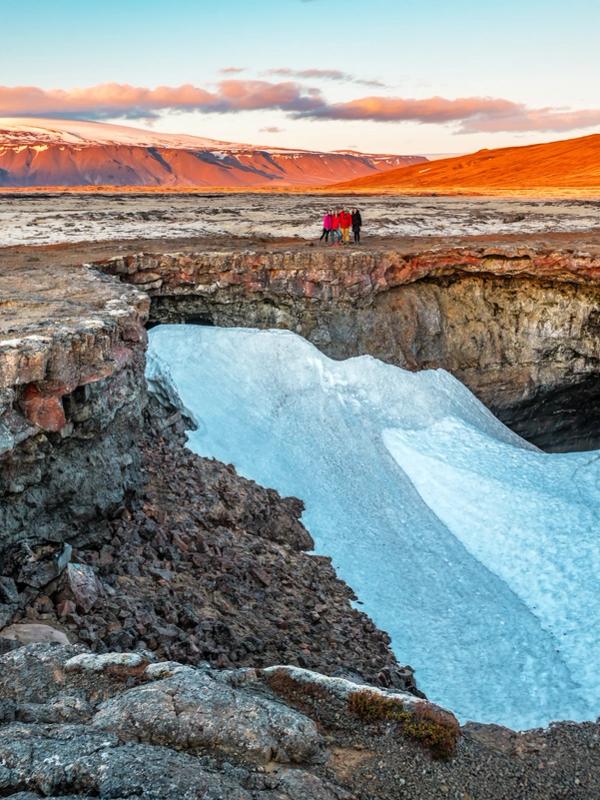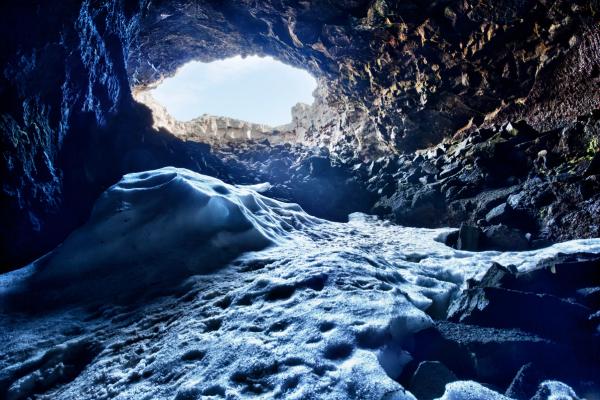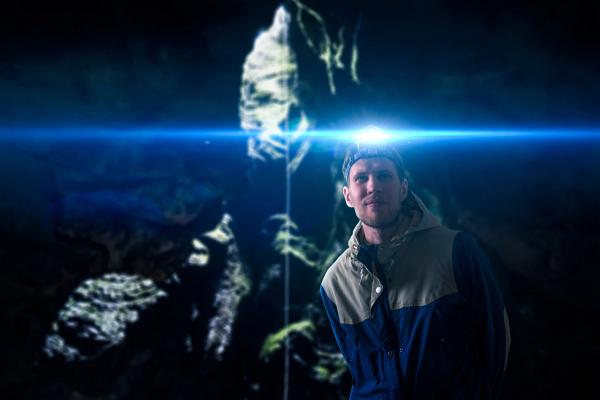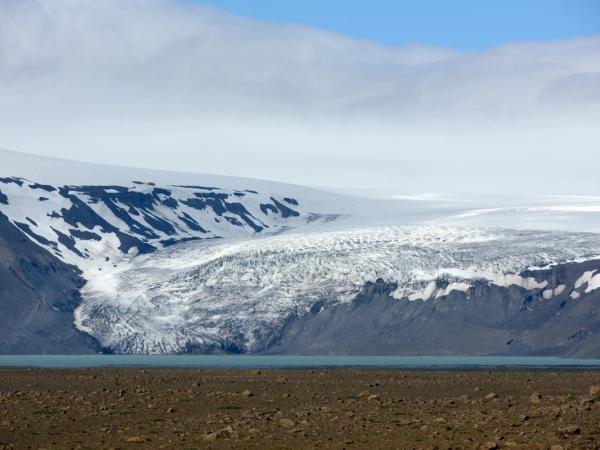
Guide to Surtshellir Lava Cave: Iceland's Mythical Underground Wonder
Some destinations feel like they're from another world, and Surtshellir Lava Cave in Iceland is one of them. With its dark tunnels, ancient Viking history, and connection to fire giants of Norse mythology, this isn't just a hole in the ground; it's a journey into Iceland's fiery past and cultural heritage.
Here's everything you need to know about this natural marvel hidden beneath Iceland's rugged landscape.
What is Surtshellir Lava Cave?
Surtshellir is Iceland's longest and most famous lava tube cave, stretching an impressive 1,970 meters (about 6,463 feet) beneath the Hallmundarhraun lava field in western Iceland. Along with the connected Stefánshellir cave, it forms a cave system that extends 3,500 meters (11,482 feet), making it one of Iceland's most significant underground wonders.
The name "Surtshellir" means "Surt's Cave," named after Surtr, the fire giant from Norse mythology who was said to bring about the end of the world with his flaming sword. Early Icelanders believed this dark, imposing cave was his home, and once you step inside, you'll understand why.
What makes Surtshellir special is not just its size but its mix of geology and history. The walls are made of solidified magma and basalt, creating unique textures and colors. The innermost section, called Íshellir (Ice Cave), contains stunning ice formations year-round – ice columns, candles, and stalagmites that create an otherworldly scene where fire and ice meet.

How Surtshellir Was Formed
The story of Surtshellir begins around 900 AD, coincidentally around the same time the first Norse settlers arrived in Iceland. A massive eruption occurred near Langjökull glacier, sending rivers of lava flowing across the landscape. As the outer layer of lava cooled and hardened, the molten lava inside continued to flow, eventually draining out and leaving behind hollow tunnels, such as the lava tubes found at Surtshellir.
This particular eruption covered about 240 square kilometers of land with lava up to 20 meters thick. Surtshellir is one of about 20 known caves formed in this lava field, though it's by far the largest and most significant.
Over the centuries, parts of the ceiling have collapsed, creating five dramatic skylight openings that allow light to filter into the darkness below. These natural skylights make exploring easier while adding to the cave's mysterious atmosphere.

Viking History and Archaeological Discoveries
Surtshellir isn't just geologically interesting; it holds fascinating historical secrets. Archaeological excavations have uncovered evidence that Vikings used the cave for what appears to be ritual activities shortly after its formation.
Inside the cave, researchers found:
- A massive stone wall about 10 meters long and 4.5 meters high, built to control access to the inner cave
- An oval stone enclosure shaped somewhat like a Viking longhouse or boat
- Thousands of animal bone fragments, methodically broken into small pieces
- Evidence of ritual animal sacrifices rather than regular cooking or eating
The dating of these finds places them between 890 and 960 AD, ending around the time Iceland converted to Christianity in 1000 AD. This suggests the cave may have been a secret pagan ritual site, where early settlers made offerings to appease the powerful forces they believed controlled the volcanic landscape.
For centuries afterward, Surtshellir gained a fearsome reputation in Icelandic folklore as a hideout for outlaws and bandits. The 12th-13th century Icelandic Book of Settlements (Landnámabók) even mentions the cave, describing a chieftain's son who traveled into the highlands to recite a ceremonial poem to the giant believed to live inside.
Where is Surtshellir Located and How to Get There
Surtshellir is located in the Hallmundarhraun lava field in western Iceland, about 60 kilometers north of the town of Borgarnes and about 145 kilometers from Reykjavík (roughly a 2-hour drive).
To reach the cave:
- From Reykjavík, take the Ring Road (Route 1) toward Borgarnes
- Before reaching Borgarnes, turn onto Road 50 heading inland
- Follow signs toward Húsafell and the Hallmundarhraun lava field
- The last stretch involves driving on gravel roads across the lava field
You'll need a car to reach the cave – ideally a 4x4 vehicle if visiting outside the summer months, as road conditions can be challenging. There's a small parking area near the cave entrance and a marked trail that leads across the lava field to the cave openings.
What to Expect When Visiting
Unlike some of Iceland's other caves that have been developed for tourism with walkways and lighting, Surtshellir remains largely in its natural state. This makes it both more adventurous and more challenging to visit.
The cave has three main entrance areas, which are dramatic pits in the lava where sections of the ceiling have collapsed. Once inside, you'll find:
- Varying ceiling heights (from 10 meters in some areas to just 2-4 meters in others)
- Uneven floors covered with fallen rocks from ceiling collapses
- Ice formations in the innermost section (Íshellir) that remain year-round
- Complete darkness beyond the entrance areas
- Archaeological remains, including stone structures and bone fragments
The total length of the cave is nearly 2 kilometers, but most visitors explore only the first few hundred meters, where the going is easier and the most interesting features are found.

Essential Preparation and Safety
Exploring Surtshellir isn't like visiting a tourist attraction with facilities and guides; it's a raw adventure that requires proper preparation:
- Sturdy hiking boots with good ankle support (the floor is extremely uneven)
- Warm clothing, even in summer (the cave temperature stays around 0-2°C year-round)
- Headlamp or flashlight for each person (plus spare batteries)
- Helmet to protect from low ceilings and potential falling rocks
- Water and snacks (there are no facilities at the site)
- Gloves to protect hands when climbing over rocks
Safety is crucial when visiting:
- Never explore alone, always go with at least one other person
- Let someone know your plans before entering the cave
- Stay on established paths to protect both yourself and the cave's features
- Be cautious around ice sections, which can be extremely slippery
- Don't touch or remove anything from the cave – it's protected as both a natural and archaeological site
The cave can be dangerous in bad weather or if you're unprepared. Consider joining a guided tour if you're unfamiliar with cave exploration or visiting Iceland for the first time.

Best Time to Visit
Surtshellir can be visited year-round, but each season offers a different experience:
- Summer (June-August): Easiest access with better road conditions and longer daylight hours, but potentially more visitors
- Spring/Fall: Fewer visitors but more unpredictable weather and road conditions
- Winter: The ice formations are at their most spectacular, but access is challenging and requires a 4x4 vehicle
If visiting specifically for the ice formations, late winter to early spring offers the best displays. The cave temperature remains fairly constant throughout the year, so the main things to consider are access and daylight.
Nearby Attractions Worth
Visiting
Make the most of your journey to this remote area by combining your cave visit with other nearby attractions:
- Hraunfossar and Barnafoss Waterfalls: Just 20-25 minutes' drive from Surtshellir, these spectacular waterfalls emerge directly from the lava field
- Víðgelmir Cave: Another impressive lava cave nearby with easier access and guided tours available
- Húsafell: A small settlement with accommodation, swimming pools, and services
- Langjökull Glacier: Iceland's second-largest glacier is nearby and offers tours including snowmobiling and ice cave exploration
- Deildartunguhver: Europe's most powerful hot spring is about 30 minutes away
Combining these attractions makes for an excellent day trip from Reykjavík or a worthwhile overnight stay in the Borgarfjörður region.
Practical Tips for Visitors
- There's no entrance fee to access Surtshellir, but there's also no facilities – plan accordingly.
- Phone coverage in the area is limited, so download offline maps before heading out.
- The nearest services (food, fuel, restrooms) are in Húsafell, about 14 km away.
- Allow at least 2-3 hours for the visit, including the hike to and from the car park.
- Local guided tours are available from Húsafell or can be booked from Reykjavík.
- Respect the site's archaeological significance – don't disturb or remove anything.
Summary
Surtshellir Lava Cave offers a rare chance to step into Iceland's geological past and mythological imagination. With its mix of natural beauty, Norse mythology, and Viking history, it's much more than just a cave; it's a journey into the heart of Iceland's cultural landscape.
While not as easily accessible as some of Iceland's more famous attractions, Surtshellir rewards adventurous travelers with a genuine, off-the-beaten-path experience. Just remember to come prepared, respect this natural wonder, and you'll take home memories of one of Iceland's most atmospheric underground adventures.



